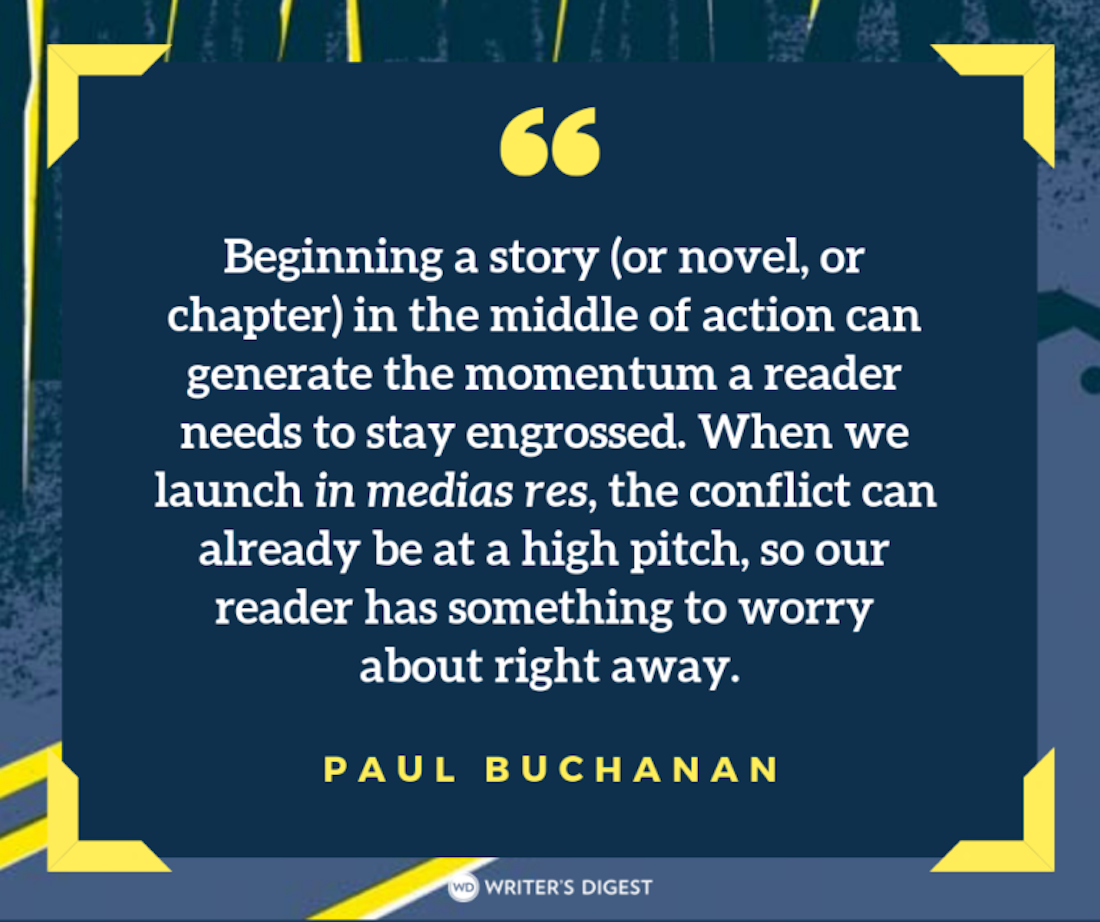Playing With Point of View
Journal with style by using variations in point of view to enliven your entries.
What characteristics do you associate with journal-writing style? Uninhibited self-expression? Spontaneity? Candor? Directness?
All of these features are natural and useful to you as a journal writer, especially when your purpose is to record an event, describe an experience or reflect on an idea. But there is also a place in journal writing for a more carefully crafted style.
One way to develop your style and expand your expressive range is to use point of view to your advantage. As I point out in my book, Keys to Great Writing (Writer's Digest Books), point of view depends in part on your relationship with your material. Determining that relationship is a matter of deciding whose story you are telling, from what perspective you are telling that story and what attitude or feelings you want to convey regarding that story.
Consider, for example, your role as narrator or observer of the events you are portraying. Where do you place yourself in time? You might choose the present tense to create a sense of immediacy ("I begin my day by watching my children climb onto the yellow school bus"), or you might choose the past tense to place an event in historical perspective ("As a young mother I would begin my day by watching my children climb onto that yellow school bus").
Likewise, consider your physical location. You might position yourself close to your subject ("The first few days of school I was sure to get hugs") or far away ("As I stood on the front porch and watched my children clamber aboard, they seemed so small and the bus so large").
As you can see, your point of view enables you to report what you are feeling—your thoughts and emotions—in many different ways, and each produces a different effect.
Another dimension of point of view is tone or attitude toward the action, subject or thing being observed. If you are a mother who has just been handed a May basket, for example, you are likely to express feelings of love and appreciation. If you are a mother who has just received a call from the principal informing you that your children were caught smoking during recess, you are likely to feel something quite different. As is true in real life, the same event may be experienced and portrayed from various perspectives in markedly different ways. The nature of that portrayal is determined by point of view.
In expressing attitude, you have nearly limitless choices. As M. H. Abrams points out in A Glossary of Literary Terms (Harcourt College), attitude "can be described as critical or approving, formal or intimate, outspoken or reticent, solemn or playful, arrogant or prayerful, angry or loving, serious or ironic, condescending or obsequious and so on through numberless possible nuances of relationship and attitude."
With these choices in mind, you can enrich your journal-writing style by using the following techniques, all of which relate to point of view:
Gradual Revelation
To create intrigue and heighten drama in your journal writing, reveal information gradually. Don't tell everything at once. For example, if you write, "I was surprised when I opened the door and saw my father holding a suitcase," you have simply told what happened, adopting the most common point of view in journal writing: a first-person omniscient narrator. If instead you write, "Nothing had prepared me for what I saw when I opened that door. There he was: my father, holding a suitcase," you have presented yourself as a character in a story, only gradually revealing a sequence of thoughts and events.
Disparity for Comic Effect
Humor takes its effect in large part from incongruity in perspective. Often, the more sharply drawn the difference between what is anticipated and what actually occurs, the more humorous the effect. One method for emphasizing incongruity in perspective is to create an expectation and then deliberately fail to meet it, as Somerset Maugham did when he wrote, "There are three rules for writing a novel. Unfortunately, nobody knows what they are."
Disparity in point of view produces a particular type of humor called irony. Irony can take many forms, but the two principal ones are verbal (or Socratic) and structural (or situational). Both types of irony, as well as humor in general, involve working on more than one level of meaning.
In verbal irony, there is a difference between what is stated outright and what is implied, as when you describe the exciting day on which you were promoted as "another ordinary day in a boring life, distinguished by one small achievement." Clearly, the day on which you were promoted was not an ordinary day, but to portray it in that way adds interest and complexity to your narrative voice.
Whereas verbal irony deals with language, structural irony deals with events. In structural irony, there is a difference between what is perceived to be true and what is actually true, as when you hint that someone is being dishonest with you, but you portray yourself as continuing to naively believe that person's statements, as in "Once again, I was relieved by Susan's assurance that she was not the kind of person who spreads gossip."
Of course, it makes no sense to present yourself as a naive narrator who is misinterpreting the situation when you are writing a journal that is intended for your eyes only. But structural irony is something you might consider incorporating if you ever rework your journal for publication as a memoir or as an autobiographical piece of fiction. Portraying a disparity between appearance and reality will make your story more interesting.
Contrasting Points of View
Another way to enliven your style is to draw a sharp contrast between two points of view. To see something from contrasting perspectives reminds us of how much we differ in our perceptions and experiences. It reminds us of the quirkiness of human nature, of what it is to be human.
"I was quite pleased with the stylishness of my new golf outfit," you might write. "My boyfriend, however, thought I looked ridiculous." Or, to turn the tables: "The engine hummed with power and the car leaned into the curve as though it were holding the road in a tight embrace, to Scott's delight and my alarm."
Although your main purpose in keeping a journal may be to express what you think and to reveal how you feel, you are not obligated to say what you think and feel directly. In fact, the more comfortable you are with using techniques that relate to point of view—gradual revelation, disparity, incongruity, irony and contrast—the more engaging will be your style.






